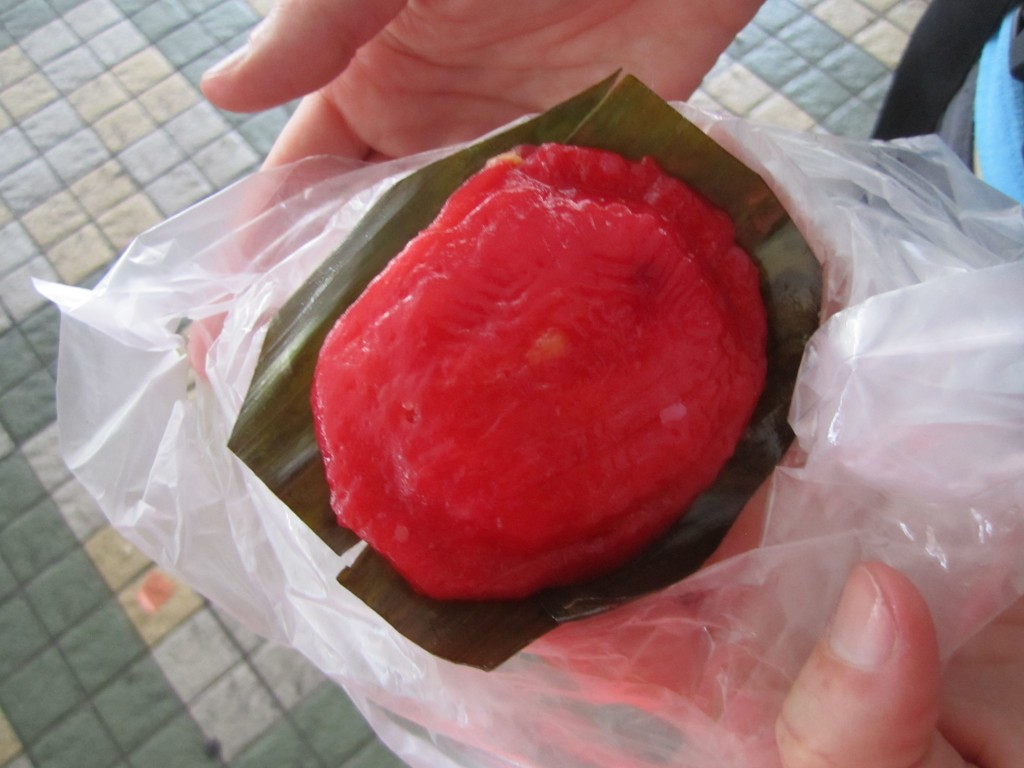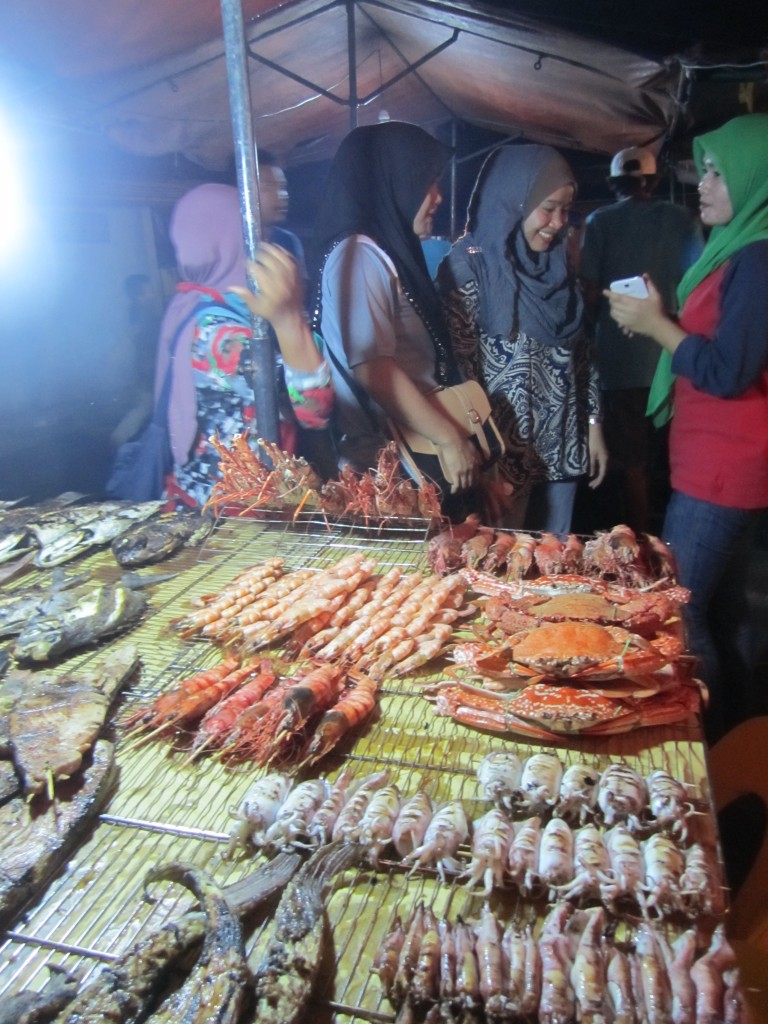Funky Borneo Cuisine You Must Try

‘Funky’ is used in the most endearing way possible when describing the cuisine of Borneo.
I like funky things, even food. They possess pizazz, stick out in your mind, something more lasting and intriguing than a so-so burrito or a slice of greasy pizza with congealing mozzarella. I traveled a large chunk of Malaysian Borneo and hung in Brunei for a few days (for tips on what to do in Bandar Seri Begawan, check here) and was pleased by the flavor palates hitting my tongue buds. From jungle greens to fried noodles, Borneo’s dishes kept me full and happy, if not fat.
Because Borneo is comprised of three different countries, Malaysia, Indonesia and Brunei and a slew of ethnic heritages, most notably Chinese, Indian, Malay, their melting-pot concepts extend to the table and that means the food is fantastic. Add to that multicultural milieu a smattering of hundreds of indigenous groups such as the Iban and Dayak and you’ve got yourself some black chicken curry, fried morning glory, hot pot and wild boar. Awesome.
Dishes abound and it isn’t always easy to decide what to eat. Below are some suggested culinary wonders of Borneo. Some should be consumed because for the rocking taste, others for the experience.
Rainforest Greens
I’ve never eaten so many weeds, trees, leaves and flowers from a rainforest in all my travels. The folks on Borneo know how to gather their vitamins from the greens that surround them. While my friend Jess and I had a night to spend in the oil rig town of Miri, we took the chance to check out Summit Cafe in a strange little commercial park outside of Chinatown. The restaurant specialized in Dayak, or indigenous, cuisine. We ate tapioca root, pakis (fiddlehead ferns) that tasted of sauteed spinach, bamboo and other vegetable treats. I especially adored the tapioca. Very filling. We had the ferns, their tight little spools cooked to perfection in several other locations around the island. The jungle veggies are a must for a traveler looking for authentic Borneo cuisine.
Strange Jelly Treats
Take a look at this thing.

Yea, I don’t know what it is either. A very nice woman sold this to me at a day market in Miri, Sarawak. She said it was some sort of taro or sago dessert. Inside was a red bean paste. The entire thing was reminiscent of school paste and sweet, gritty wet sand. I had a Play-doh mold when I was little that transformed the stuff into shell shapes. I guess my mom sent it to this lady to use when I was done with it. Try it if you see it or anything like it. You can always politely gum the thing in front of the cook and then wash the strangeness out of your mouth with a kopi luwak.
Waffles
Okay, so waffles aren’t that funky to most Westerners. But these waffles were a sensory delight. You can find them throughout Borneo, usually sold inside supermarkets where ladies in their hijabs wait to make them fresh for you and layer them with peanut butter or a sugary, coconut spread colored dull green. Then they cut them up, bag them and toss them at you warm. Open that bag to get a smack of fragrant waffle made with palm oil straight to the nose. I became obsessed with these treats. The best I had were from a Chinese-run supermarket in Bandar Seri Begawan, Brunei. Some locals watched me down the waffles in reverence and pleasure and took as much interest in my delight as I took in eating a bunch of amazing carbs. At around a dollar a pop, I spent several dollars on these yum yums.

Bidayuh Rice Wine
For those of you that travel around Asia, you know that when someone offers rice wine it can be a questionable experience. Some of it tastes like I imagine petrol would taste. Then there is the concern over formaldehyde in the liquor or contamination. More that one traveler has gone to an early grave drinking bad booze in this part of the world, even from sealed bottles. But the Bidayuh of Annah Rais know how to make some rice wine. It went down smooth, was fruity and mildly sweet and despite the face I’m making to steel myself against the foul taste, I was proven wrong by these longhouse vintners. Give it a swig. And if you want to try making your own rice wine, check this out for excellent directions on how to get your liquor on at home.

Sea Meat
While moving from excursion to town to river around Sabah, Borneo Malaysia’s northern most state, Kota Kinabalu served as a convenient hub. Their night market was excellent; it provided coconut puff desserts, savory noddle soups, and most importantly, phenomenal seafood. Now, everyone and their dirty, backpacker bud recommended getting seafood at Top Spot in Kuching, a sprawl of seafood stalls parked on the top of a parking garage near the city center. But I feel the barbeque experts at the night market in KK had them beat. Want a filet of parrot fish? Done. Prawns caught off the pier? Okay. My favorite was a tuna steak with a ruddy-colored seasoning served with hot chiles, seaweed with briny floaters that popped in your mouth and sticky, dry rice on the side. The night market in Kota Kinabalu is not to be missed. Get there for your sea meat needs.

Kek Lapis Sarawak
Bright, colorful and spongy, Kuching’s cakes are the royalty of the dessert world. It takes hours to make these treats, ladies patiently layering on the different flavors of dense sugar and flour. They’re a specialty of Kuching, Sarawak, making the capitol of the Malaysian state famous for these layer cakes and cat statuary. Kek Lapis can be found at stalls in the markets and near the river. There are storefronts in old houses that sell plastic-wrapped confections in a rainbow of tastes and colors. Jess and I bought an orange cake and ate it like a salami chub until we couldn’t take anymore and the thing ended up as a paperweight for our travel notes and books. You’d think the flavor would be as vivid as the colors, but the taste is subdued, that general “white sugar” sweet of most Asian desserts. For more pictures of Kek Lapis, check them out here and be astounded by the number of intricate patterns in the layers.

See? Funky is a good term for Borneo cuisine. Get thee to the island, kid. Eat.



I was feeling home sick (I’m from Brunei), and stumbled upon your post. That strange jelly treat in your photo, it’s called “Ang Koo Kuih”. Translated from the Chinese dialect of Hokkien, it means red tortoise cake. It’s made with a mold that is carved out of wood and is supposed to be a tortoise, symbolising longevity.
The outside is made with glutinous rice flour and the filling inside is usually a yellow mung bean paste.
A lot of traditional snacks and sweet treats in the area are made with glutinous rice flour and so has a sticky, chewy, gum paste like texture. We call it kuih, or as the Japanese would call it, Mochi.